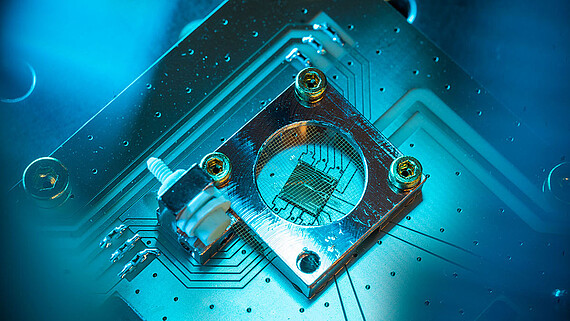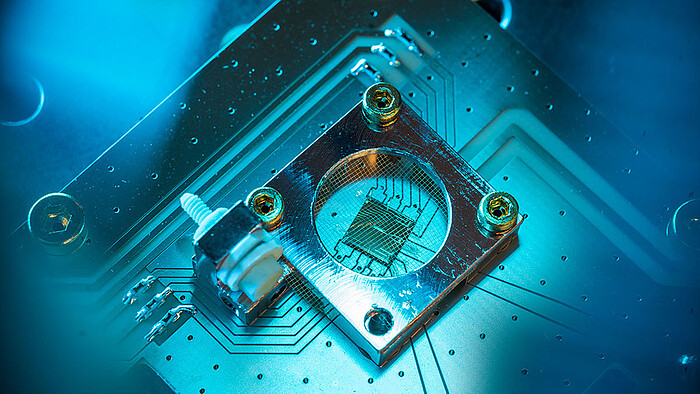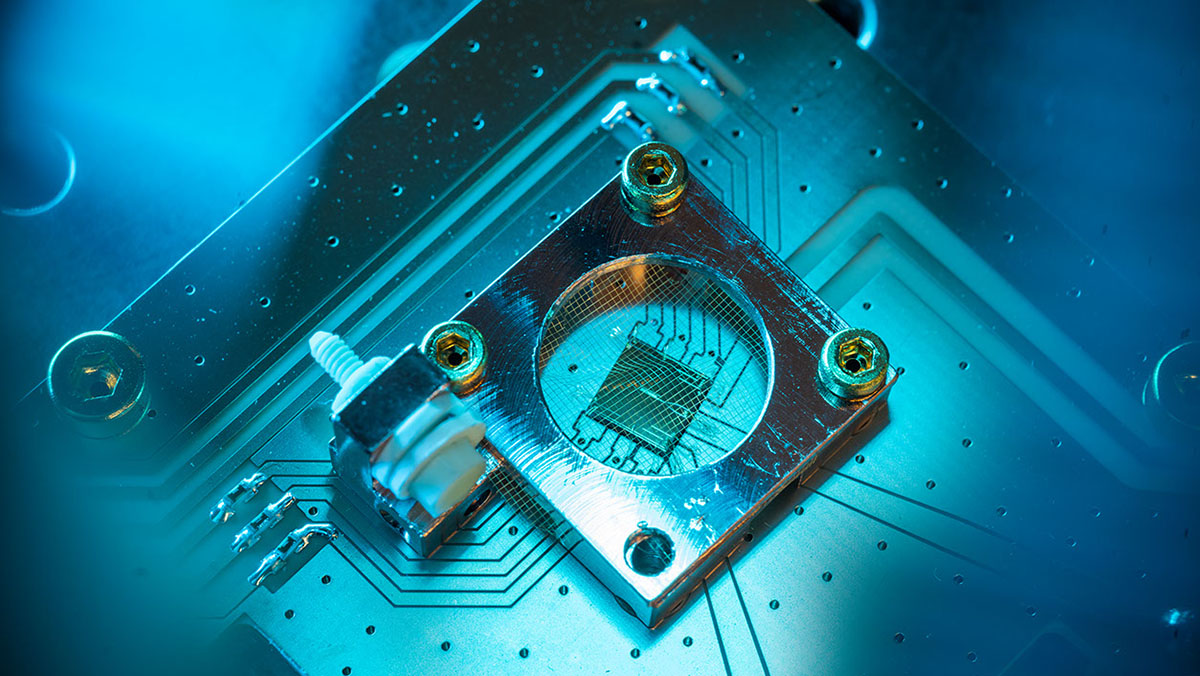

 ©
Jan Hosan/QuantumFrontiers
©
Jan Hosan/QuantumFrontiers
Introduction
Understanding the behaviour of interacting spin systems is highly interesting both in terms of the underlying quantum many-body physics questions and for applications of many-body effects in metrology. Classical computer simulations can in many cases only simulate the behaviour of such systems for small scales, whereas the application to metrology e.g. for measurements at the Heisenberg limit, bears great potential but also requires great care in the engineering of the many-body interactions and protocols.
Within this project, we aim to use trapped ions to study interacting spin systems in an integrated surface-electrode trap architecture. The spin degree of freedom is encoded in hyperfine states of the individual ions. Ions are kept in surface-electrode trap arrays, and the spin-dependent interaction is mediated by spin-motional couplings. To implement these, we focus on the microwave near-field approach because of the low initial motional state sensitivity, the potentially superior control of microwave fields compared to lasers, the scalability inherent in the surface-trap integration, and the absence of spontaneous-emission decoherence.
Results
In collaboration with sub-project A06 we have successfully implemented spin-motional couplings and effective spin-spin couplings. The latter has been demonstrated through the realisation of a high-fidelity entangling two-qubit quantum logic gate, including a new pulse- shaping approach to make the effective interaction more resilient to fluctuations. We have reached 99.7% two-qubit gate fidelity and developed a generalised framework for the implementation of robust quantum gates together with A06. Because the prepa- ration and readout (SPAM) error limits our ability to characterise the gates better, we have implemented benchmarking protocols based on longer randomised circuits. The first step was individual-ion address- ing using micromotion sidebands. We have implemented randomised benchmarking to characterise the fidelity of the individual-ion addressing. Subsequently, we have implemented cycle benchmarking to characterise the two-qubit register and thus demonstrated universal two-qubit control as a central step for the implementation of scalable quantum computing based on the quantum CCD architecture. These developments have been key to establishing trapped-ion quantum computing as a major research topic at LUH and to start the construction of two quantum computer demonstrator setups based on major BMBF and state grants. Together with sub-project A04 we have studied spin models amenable to implementation with our approach.
We have built and commissioned an ultra-low vibration cryogenic ion trap setup and demonstrated a new real-time capable individual-ion state readout method based on an EMCCD detector. We have developed, demonstrated and patented a scalable multi-layer surface-electrode trap array microfabrication process.
Publications
Showing results 1 - 8 out of 8
Project leader
30167 Hannover
30167 Hannover
30167 Hannover

